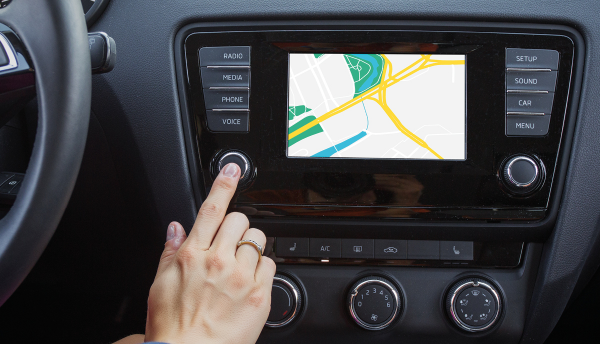
GM claims development of the Bolt requires an "unprecedented supplier relationship".
General Motors (GM) announced on Tuesday (20 October) many details of its strategic partnership with LG Vehicle Electronics, giving the arrangement credit for enabling development of the production Chevrolet Bolt electric vehicle (EV), due on sale in late 2016. In a statement, GM said that development of the Bolt required an "unprecedented supplier relationship". GM said that, through the relationship, it was able to combine its "proven in-house capabilities in electric motor design, battery control, system validation and vehicle body/system integration" with LG's expertise in infotainment, battery systems, and component development.
Specifically, GM says that LG-supplied new components and systems for the Bolt EV including: electric drive motor (GM designed); power invertor module (converts DC power to AC for the drive unit); on-board charger; electric climate control system compressor; battery cells and pack; high-power distribution module (manages the flow of high voltage to various components); battery heater; accessory power module (maintains low-voltage power delivery to accessories); power line communication module (communication between vehicle and a DC charging station); instrument cluster; and infotainment system.
In a GM statement, global product development head Mark Reuss said, "Chevrolet needs to be disruptive in order to maintain our leadership position in electrification. By taking the best of our in-house engineering prowess established with the Chevrolet Volt and Spark EV, and combining the experience of the LG Group, we're able to transform the concept of the industry's first long range, affordable EV into reality."
In a statement, the president and CEO of LG Electronics Vehicle Components Co, Woo-jong Lee, said, "Being selected as GM's EV technology partner positions LG as a key player in next-generation vehicular technologies. The opportunity to work with GM on such game-changing technology is indicative of exactly the type of contributions that traditional tech companies can make in the automotive space."
LG Electronics Vehicle Components, GM said, led a team of LG companies, including LG Chem, LG Innotek, LG Display, and LG Electronics. LG Electronics has invested more than USD250 million in an engineering and manufacturing facility in South Korea to support component development and manufacturing of components for the vehicle. However, LG is relatively new to the EV drivetrain space, but has long supplied batteries and display technologies to automakers. Ken Chang, vice-president of vehicle components for LG Electronics, told Automotive News, "Our vision is to be a component supplier for electric vehicle manufacturers."
GM also noted that the development around the Bolt EV marked the first time that GM integrated a full EV component supplier so early in vehicle development. The company used the discussion of this relationship to reinforce its component strategy, saying, "GM's component strategy is centred on three options: build, buy and partner. Where it makes economic and strategic sense, GM will build some of its own components. Others will be purchased directly from suppliers with the most expertise in a particular discipline. And, as in the case of LG, GM will partner with a supplier to leverage its own engineering with the supplier to develop unique strategic systems and components."
Reuss explained the importance of the shift on a conference call discussing the LG approach, reports the Detroit News. In the past, Reuss has said of suppliers, "We told them what to do, how to do it and how much we'd pay for it. And what we found is that behaviour blows up in your face, frankly."
Additionally, Automotive News quotes Reuss as saying, "It's not just about EVs. We're also looking at ways we can leverage LG's expertise in consumer electronics, particularly in display systems, to raise the bar with our interiors." Reuss also credits the relationship as a key enabler allowing GM to keep the cost of the production car down; the company plans to keep the price at around USD35,000, such that it will cost consumers less than USD30,000 after a USD7,500 US federal tax credit.
Reuss says its future development model for EVs will vary by project, telling Automotive News, "Will we replicate this business model over and over again? I don't know. But it's certainly allowed us to break through at least three of the barriers here of traditional electric vehicles," referring to price, range and utility. At GM's investors' conference earlier in October, Reuss said GM expects an industry-low cost of USD145 per kilowatt hour for the Bolt EV battery.
Outlook and implications
GM's approach to development of the Bolt EV is radically different from previous GM programmes, and could signal potential for automakers to reconsider approaches to vehicle development in areas beyond their traditional expertise. It also raises the question of whether an arrangement like this might prove to be more effective in developing new high-technology autonomous and alternative powertrain products than for companies such as Apple, Google, and even Tesla to go it alone.
It is not known definitively the approach Apple or Google will ultimately take, though Google has indicated it is more likely to leverage contract manufacturing for its eventual autonomous vehicle. However, the GM-LG strategic development of Bolt underscores the efficiencies that can be enabled by ensuring both companies thoroughly understand vehicle development and manufacturing, as well as having experience with the automaker-supplier working dynamics. While LG's involvement on the Bolt may have a different character from previous projects, GM and others have leveraged project-by-project partnerships for various vehicle projects, including GM and Honda working together on fuel-cell powertrain solutions.
GM introduced the Bolt at the 2015 North American International Auto Show, promising an affordable EV with about 200 miles of range and later confirming US production. The vehicle is due to come to the market ahead of Tesla's Model 3, which is expected to have similar characteristics. The EV sector is expected to continue to see new entries and become more competitive, even as consumers only slowly warm to them.